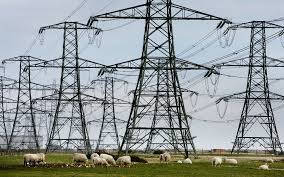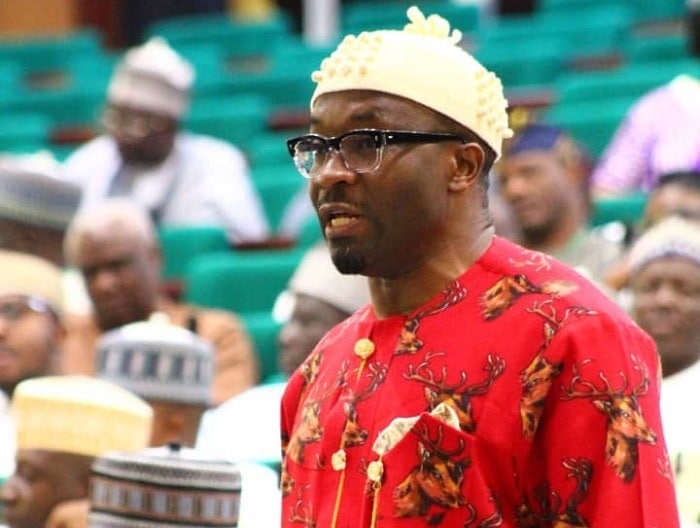Nigeria’s national power grid has once again collapsed, intensifying an ongoing energy crisis that continues to disrupt daily life and destabilize the country’s economy.
Grid failures, which have become increasingly frequent in recent years, leave large portions of the country in darkness for hours or even days. This chronic issue is more than an inconvenience; it poses a serious threat to Nigeria’s economic growth, industrialization, and the livelihood of millions.
For context, the national grid collapsed eight times in 2022 and has already failed twice this year. These persistent incidents raise critical questions about the ability of the Transmission Company of Nigeria (TCN) to stabilize the grid, despite the Federal Government’s multi-billion-dollar investments in the sector.
This situation persists even after the privatization of 11 electricity distribution companies and six generating companies, leaving the government as the sole owner of TCN.
The blame game continues?
The Nigerian Electricity Regulatory Commission (NERC) sounded the alarm in its 2022 annual report, warning that the national grid was becoming increasingly unstable. NERC reported a decline in grid reliability as total system collapses, which result in nationwide blackouts, surged compared to previous years.
According to NERC, a total system collapse leads to a nationwide blackout, while a partial system collapse affects only specific regions. The power grid, designed to operate within specific stability limits—330kV±5% for voltage and 50Hz±0.5% for frequency can quickly destabilize when these limits are breached, causing widespread outages.The TCN is tasked with maintaining grid stability, but it has struggled to manage the balance between power supply and demand. Any significant imbalance can push grid parameters beyond their limits, creating the risk of collapse.
Recent explanations from government officials, including the Minister of Power, Bayo Adelabu, have attributed some failures to incidents like the fire on the Kainji/Jebba 330kV line, which caused significant generation losses. Still, other collapses have been linked to infrastructure deficiencies, gas supply challenges, and limitations within the transmission system itself.
The Nigerian Power Consumers Forum (NPCF) has suggested that sabotage by hoodlums may be behind some of these grid collapses.
According to the NPCF Convener, Michael Okoh, incidents like the fire at the Birnin Kebbi transmission substation could not be solely attributed to technical issues. Transformers, which are built with multiple layers of protection, rarely ignite without external interference.
Okoh pointed out that both the 330kV and 132kV lines experienced fires at the same time, despite being located far apart, fueling suspicions of sabotage.Similarly, Jos Electricity Distribution (JED) reported that 37 of its transmission towers were vandalized in Benue State, an act that could have had catastrophic consequences had JED’s technical team not responded quickly.
These allegations of sabotage highlight the vulnerability of Nigeria’s critical infrastructure to both internal and external threats.Government Investments:
Where Is the Impact?
Despite the alarming frequency of grid failures, the Nigerian government has made significant investments in the power sector. For example, in 2022, The PUNCH reported that the government, in collaboration with international donors, set aside over $1.61 billion to stabilize power supply. TCN imported 22 brand-new power transformers and various other high-capacity equipment to bolster the grid.
Additional funding came from entities like the World Bank, African Development Bank, and the Japanese International Cooperation Agency, bringing the total investment to more than $4 billion.In addition, the Siemens Presidential Power Initiative aimed to overhaul Nigeria’s power infrastructure by injecting up to $2 billion into the national grid. By 2023, the government pledged another $20 billion to build new power plants and transmission lines, with a target of generating 30,000 megawatts by 2030 and 60,000 megawatts by 2060.
Yet, despite these massive financial commitments, little progress has been seen in power distribution. The national grid still operates well below its capacity, often leaving citizens wondering where all this money is going.The frequent collapse of Nigeria’s power grid poses a severe threat to the country’s economic development.
According to estimates, power interruptions cost the economy billions of naira each year. A report from GET. invest, a European program supporting renewable energy in Africa, noted that Nigeria typically only transmits between 3,500 and 5,000 MW of electricity, despite its capacity to generate much more.
The poor transmission network, combined with regular grid collapses, has hampered the country’s industrial growth and productivity. For businesses, especially small and medium-sized enterprises (SMEs) in sectors like manufacturing, agriculture, and retail, these outages are catastrophic.
Manufacturing lines are forced to halt production during power cuts, leading to delayed deliveries, reduced output, and sometimes even canceled contracts. In agriculture, the inability to refrigerate perishable goods during outages leads to food waste, aggravating both financial losses and food insecurity. Sectors like telecommunications, banking, and IT also suffer, as they require consistent electricity to function.
Many businesses are left with no choice but to invest in expensive backup generators, further driving up their operating costs. At a national level, the instability of the grid discourages both foreign and local investment. Investors are wary of entering markets where the basic infrastructure needed to support their operations is unreliable.
The Nigerian Association of Chambers of Commerce, Industry, Mines, and Agriculture (NACCIMA) estimates that these frequent power failures significantly reduce Nigeria’s Gross Domestic Product (GDP) growth, increase inflation, and contribute to an unstable business environment.Households are also severely affected by the power grid’s failures. With the rise in the cost of Premium Motor Spirit (PMS) and other essentials, many Nigerians find it difficult to afford alternative power sources like generators or inverters. Low-income families, in particular, are disproportionately affected, as they often cannot afford the additional costs of maintaining power during extended outages. This limits their ability to preserve food, power essential appliances, or even maintain basic communication with family and friends.
Is There a Way Forward?
Political figures have expressed frustration over the continued power failures. Peter Obi, the 2023 Labour Party presidential candidate, called the frequent collapses a “national shame” and a “glaring testament to the failure of leadership.” Obi argued that Nigeria’s current power generation, which is under 10,000 MW, is grossly inadequate for its population and economy, especially compared to countries like South Africa and Egypt, which generate over 40,000 MW each.Obi’s comments reflect a growing national sentiment that the country’s leadership has failed to address the root causes of the power crisis.
The constant grid failures, he argued, stifle economic growth and leave Nigerians languishing in darkness, with no end in sight.To solve Nigeria’s power crisis, both short-term and long-term solutions are needed. Immediate steps must include upgrading grid infrastructure, replacing outdated equipment, and ensuring that the power grid is properly maintained. There also needs to be a focus on diversifying Nigeria’s energy mix, with greater investment in renewable energy sources like solar, wind, and hydropower. Such diversification would not only reduce the pressure on the national grid but also provide more sustainable and reliable energy.
In the long term, regulatory reforms are essential to foster private investment in the power sector. These reforms must address the inefficiencies in the transmission and distribution systems, as well as close the metering gap that currently prevents the proper billing of electricity consumers.
Ekpor Temple, writes from Port Harcourt

Call:
Sandra - 07069148333
Pauline - 08174374150
Scholastica - 09060678434













